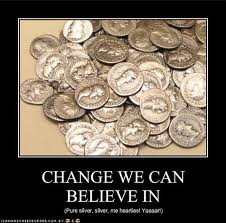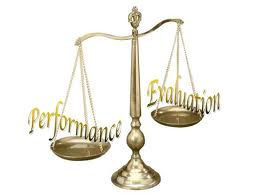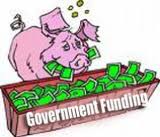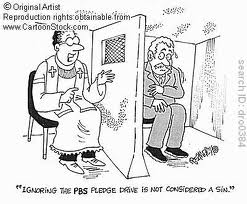 Welcome to Wednesday of individual giving week where we’re looking at different individual giving strategies as a way to replace dwindling pools of government funding. We’re using characters from the movie “Finding Nemo” to look at various individual giving strategies. Monday’s post was all about “Crush the Turtle” and the thrill seeking mentality of special event fundraising. Yesterday’s post focused on direct mail. Today, we’re looking at ePhilanthropy through the eyes of “Dory” (the regal tang fish whose voice you recognize as Ellen DeGeneres):
Welcome to Wednesday of individual giving week where we’re looking at different individual giving strategies as a way to replace dwindling pools of government funding. We’re using characters from the movie “Finding Nemo” to look at various individual giving strategies. Monday’s post was all about “Crush the Turtle” and the thrill seeking mentality of special event fundraising. Yesterday’s post focused on direct mail. Today, we’re looking at ePhilanthropy through the eyes of “Dory” (the regal tang fish whose voice you recognize as Ellen DeGeneres):
“Give it up old man, you can’t fight evolution, I was built for speed!”
There is currently a debate raging in fundraising circles between traditionalists and futurists.
Futurists argue that giving trends all point to donors giving via your website, email, social media, text messaging, and e-video campaigns.
Traditionalists sound more like Jeff Brooks who said in his recent blog post titled “The case against innovation“:
“When you get bored with letters and change everything so it’s cool and innovative, you force people to spend energy and time figuring out your new conventions. That’s energy and time they don’t have, or don’t care to spend on such a stupid task. No matter how cool you’ve made it, you’ve put a wall around whatever you’re trying to communicate. You might think it’s a very low, easy-to-climb wall — but it’s still a wall, and that means fewer people are going to get your message.”
I personally find middle ground between these two camps:
-
Online giving increased by more than 30-percent in 2010 compared to 2009.
-
It is estimated that approximately 7-percent of all charitable giving was secured online in 2010.
-
Average size gift statistics for online giving is starting to look remarkably similar to direct mail data.
-
The trend arrow over the last decade is unmistakable.
 (Note: A special thanks to Blackbaud and their analytics division for keeping an eye on these trends. You can find a Blackbaud widget that links to similar kinds of information at the bottom of my website.)
(Note: A special thanks to Blackbaud and their analytics division for keeping an eye on these trends. You can find a Blackbaud widget that links to similar kinds of information at the bottom of my website.)
The reality is that it can be somewhat expensive for many non-profits to get into individual giving strategies involving technology. However, the good news is that they don’t need to live on the “bleeding edge of technology”. Agency can and should start to take small steps towards the future. For example, even small organizations can add a “donate now” button to their webpage, set-up a Facebook and Twitter account, and start experimenting with both listening to donors and nudging them toward online giving opportunities.
The truth is probably somewhere in the middle. I recently read somewhere (I honestly can’t remember where or I would cite the source), that there is likely lots and lots of “cross pollution” between different individual giving strategies. Here are a few examples to illustrate this point:
-
A donor gets a letter in the mail and they are inclined to make a contribution. However, they see your agency’s website address embedded in the letter and go online to make that donation out of convenience.
-
A donor is solicited using a face-to-face solicitation strategy. They sign the pledge card. When the pledge reminder arrives, they go online to pay their pledge because it might be more convenient.
-
A donor receives an email (doesn’t matter if it is for solicitation or stewardship purposes). They then receive a visit by a fundraising volunteer who asks them to make a pledge. They sign the pledge card because it is convenient rather than dig through their cluttered email inbox for that donation link.
 Everything is getting more and more interconnected. For this reason, I am all for investing a little time and money in ePhilanthropy because the decision isn’t about which tool to use with individuals. The decision involves which tools to use in concert with each other.
Everything is getting more and more interconnected. For this reason, I am all for investing a little time and money in ePhilanthropy because the decision isn’t about which tool to use with individuals. The decision involves which tools to use in concert with each other.
Don’t go crazy by focusing exclusively on lots and lots of new technology. Start small. And by all means, don’t use technology to replace your existing solicitation tools (e.g. mail, pledge cards, fundraising volunteers, etc).
Remember, the more tools you have in your toolbox to connect with individuals the more likely it will be that you are able to engage what is clearly the largest slice of the charitable giving pie chart — INDIVIDUAL DONORS.
What is your organization doing right now in the arena of ePhilanthropy? Website? Email? Text? Electronic video? Social media? Do you have a written ePhilanthropy plan in place that delineates which online tools you’re using and which tools are used for cultivation vs solicitation vs stewardship? Please take one minute to share using the comment box below a nugget about where you’re at because we can all learn from each other.
Here’s to your health!
Erik Anderson
Founder & President, The Healthy Non-Profit LLC
www.thehealthynonprofit.com
erik@thehealthynonprofit.com
http://twitter.com/#!/eanderson847
http://www.facebook.com/eanderson847
http://www.linkedin.com/in/erikanderson847

























